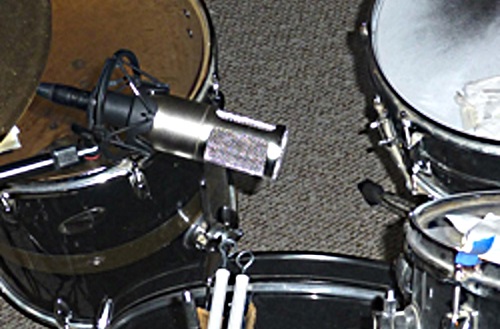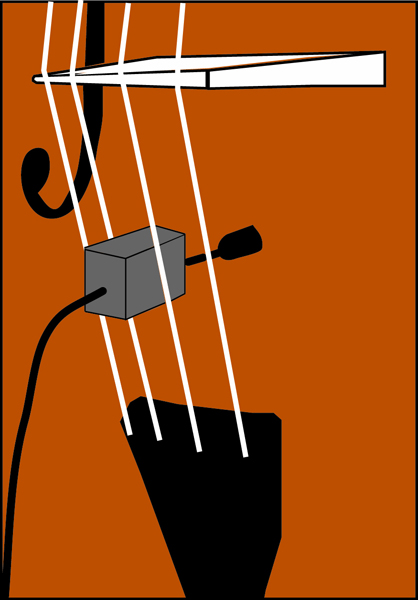
Flute
Get a headworn mic that has a gooseneck-mounted mic capsule such as the Audio-Technica ATM75. Have the player wear the mic and place the mic capsule between the mouthpiece and tone holes.
Electric Guitar
Mike the guitarist’s strumming hand to capture the pick sounds, and mix it with a mic on the amp. Another one: Using a Y-cord, feed an electric guitar through an amp and through a Leslie speaker. Mike both and pan left and right. Phase heaven! Try it on a vocal, too.
For lots of lows and highs from a guitar amp, aim a Shure SM57 straight at the center of a speaker cone, next to the grille. To reduce lows and highs, hang the mic from over the top of the amp so it picks up the speaker at 90 degrees off axis. There’s no proximity effect at that angle.
Bassoon, Clarinet & Oboe
Here’s a way to give the musician some mobility. Clip a lavalier mic to the player’s shirt, even with the center of the instrument. It will pick up the instrument from behind. You might mix in another mic taped near the bell.
Bagpipes
Mike the handheld chanter about 8 inches from the side, and mike the pipes overhead. But why would you want to amplify a bagpipe anyway? (Some folks would say the same thing about a banjo).
Cello & Acoustic Bass
Get a miniature omni and stiffen its cable using a 3-inch long coat-hanger wire taped just behind the capsule. Wrap a windscreen around the wire, and stuff it between two strings under the bridge. Place the mic near the body of the instrument (Figure 5).
Grand Piano
Miking a tone hole gives a restricted, mid-rangy sound that can add a lot of color, while miking the sound board from underneath gives a dark, full tone. Also consider placing a mic at the piano tail looking inside the slightly raised lid. Or, try a couple of PZMs gaffer-taped to the underside of the raised lid over the bass and treble strings.
Synthesizer
To add some grit, run the synth through an amp and mike the amp.
Blues Harmonica
Rather than using a “bullet” mic, place an SM57 (or any dynamic) next to a guitar-amp speaker. Mike the harmonica close up, and run that input through the amp using an XLR-to-phone impedance converter. The amp’s distortion and high-frequency roll-off might deliver just the sound you want. (And try it with a vocal as well.)
World Acoustic Instruments
For instruments like pipa, bouzouki, oud, and sitar, try a small-diaphragm condenser about 3 to 8 inches away. If there’s a sound hole, place the mic fairly close to where the fingerboard meets the body, and if there’s not one, place it in front of the body. The sound hole resonates at a low frequencies with the air inside the instrument, producing a bassy, thumpy tone.
Concertina, Accordion & Bandoneon
Grab a couple of mini omnis, put a wide rubber band on each of the player’s wrists, and insert the mic capsules and 1 inch of cable through the rubber band, which holds each mic close to the tone holes. Or gaffer-tape the mics to the instrument first, so when the player comes on stage, he/she can remove the mics and mount them on the hands.
Anything
Capture an instrument or vocal with a cheap piezo mic, bullet mic, or headphones. Tape a paper towel or TP tube to the end of a mic – it creates a resonator unlike any EQ you’ve heard. Just watch out for feedback. Or place a mic inside a tin can to get a unique coloration. Unusual miking methods can create some intriguing, original sounds to dazzle the audience.
More articles by Bruce Bartlett on PSW:
Recording Microphone Techniques To Produce Warm, Spacious Stereo
Remastering Jazz Classics: The Dave Brubeck Quartet, Art Pepper, and Sonny Rollins
Deconstructing Hip-Hop To Hear How The Mix Comes Together

